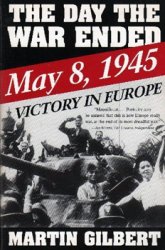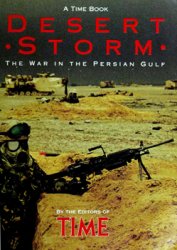In effect, the island was developing into two separate communities, the Irish and the Normans. Nonetheless, many of the Norman barons who had persisted in further conquest loosened themselves from the English law, intermarried with the natives whom they had conquered, and soon became "more Irish than the Irish" with regard to English law, and even began to adapt the existing Gaelic system for their own purposes. Many territories still remained under the dominance of Irish kings and there the Irish law and custom prevailed. But within some Norman communities, specifically what became known as the "Pale," a territory of varying size at different periods of history, there was a general disregard for the Irish, who were regarded as less than civilized. There the benefit of the law was not extended to the Irish, even if they were of a free status. Even within the church there was internal segregation in the religious orders between Irish and Norman congregations. The older Celtic system of monasticism was declining before the influx of the orders structured on the Benedictine model and the new mendicant orders, such as the Dominicans and the Franciscans, to which both the Irish and the Normans were drawn.
The Anglo-Normanization of Ireland, with the appearance of counties and officials such as sheriffs, received a setback in 1315 when Edward Bruce, the brother of the king of Scotland, landed in Antrim. Donal O'Neill, the king of Ulster and claimant for the title of high king of Ireland, deferred to Bruce's claim. During the severe warfare that ensued, Bruce's forces won many battles, but the lack of unity among his allies, some of whom sought to enhance their own claims against either other Irish or the Normans, inhibited it from becoming a national resistance. Bruce himself was killed three years later.
Forestalling the threat from Bruce was not followed by an enhancement of the Norman position in Ireland. Gaelic chieftains reconquered some territory and more Normans, such as the de Brughs in Connacht who became Burkes, were Gaelicized. Social disorder and the onset of the Black Death, the plague that decimated the European population in the 14th century, discouraged immigration and even encouraged reverse migration back to England. The phenomenon, so frequent in Irish history, of absenteeism began to develop. Vassals of the king who had been given territories in Ireland remained aloof from them, other than securing their own personal profit, but they abandoned any effort at exercising their public duties, especially that of gathering revenue for the crown.
So serious was the situation that an Irish parliament, moved by fear and a sense of siege, met in Kilkenny in 1366 and passed a series of celebrated, notorious statutes, which from a modern perspective appear racist and exclusivist. The laws forbade Normans from engaging in private warfare within the Norman (or English) area, entering into marriage alliances or alliances based on fostering of children between the Normans and the Irish, using Irish names, dress, or law, and speaking the Irish language within Norman territories. The segregation pattern was also reinforced within the church. Normans who had adapted to Irish customs and language were regarded as "degenerate English."i But even the Normans, or English in Ireland, began to be looked on as different from the English in England, where a distinction was increasingly drawn between the English born in England and those born in Ireland, which worked to the disadvantage of the latter.
The English nobility in Ireland were pulled two ways. On one hand, they emphasized their distinction from the Gaelic Irish and continually expressed disappointment at the failure of the king and the authorities in England to give them needed monetary and military support. On the other hand, they had a sense of autonomy and were resentful at any English interference. In a very premature way they were formulating a constitutional theory of a distinct kingdom of Ireland.
An example of some royal interest in Irish developments was Edward III's designation of Lionel, the duke of Clarence, his second son, as lieutenant and supreme governor for Ireland. He arrived in 1361 with a thousand men, the cost of which was born by the English exchequer. He had success in regaining some territories lost to the Gaelic kings. It was during his sojourn in Ireland that the ominous statutes of Kilkenny were passed. For the rest of the 14th century the English monarchy continued to supply substantial subsidies and armed men to Ireland.
In 1394 and 1399 King Richard II came to Ireland. His first visit brought significant military victories. Many of the Irish chieftains swore oaths of "liege homage" to him, and some were knighted. Richard categorized the factions in Ireland into three groups, "the wild Irish our enemies, Irish rebels, and obedient Englishmen." The middle group consisted of the great majority of the Irish chieftains who had submitted, while the wild Irish were those few, like O'Donnell, who had not submitted. Many of the Irish chieftains even visited the king
1 From this point we will refer to the Normans, their descendants, and others who followed them to Ireland as English. We will reserve the use of the term Anglo-Irish until dealing with those whose roots in Ireland start in the 16th and 17th centuries.
In England when he returned there. However, not long after, English nobles in Ireland attacked many of the Irish leaders. The king aimed to return to Ireland to resolve the difficulties. However, his return was delayed until 1399 because of threatened rebellion in England. When he did come with a large and well-equipped army, he still met considerable opposition. Then an invasion of England by the supporters of Henry, duke of Lancaster, drew him home again. The invaders were successful and Richard was executed.
Preoccupation with continental wars, in which the English king ultimately lost title over all territory except Calais, inhibited the Lancastrian monarchs from devoting much attention to Ireland. During the period from 1399 to 1461, Gaelic chieftains made a significant reassertion of their position. The territory where "English law" prevailed was significantly reduced. That territory, the "Pale," had shrunk to the area emanating from Dublin northward only to Dundalk, westward to Kells and Trim, and southward to just below Dublin. Significant territories outside the Pale were under the control of English lords, such as FitzGerald of Desmond in Munster, Butler of Ormonde in Kilkenny, Burke of Clanricard and Burke of Mayo in Connacht, who had integrated into Gaelic society. The drawn out Wars of the Roses, that is, the rivalry for the English monarchy between the houses of Lancaster and of York, made the claimants
Kilkenny Castle is one of the most recognized buildings in Ireland. The Butler family bought the castle in 1391 and lived there until 1935.They were the earls and dukes of Ormonde.
(Library of Congress)

For the throne heavily dependent on certain great lords and the substantial military forces they could provide. It was a reversal of the feudal ideal whereby the king's vassals were expected to provide designated amounts of warriors when needed. Now, the claimants for the monarchy had to beseech the support of mighty vassals who were virtually monarchs in their own right. The same situation applied in Ireland, and those who particularly gained from the turmoil in England were the Butlers of Ormond, who identified with the Lancaster side and the FitzGeralds, especially the FitzGeralds of Kildare, who generally supported the Yorkists.
Edward IV, the first Yorkist king, in 1467 sent John Tibetot, the earl of Worcester, as lieutenant in Ireland with the task of reasserting Edward's title as Lord of Ireland, and subduing even the semi-independent lords who had supported him. For instance, the earl of Desmond was attained and beheaded. The execution backfired as the Desmond Geraldines henceforth permanently identified with the Irish rather than the English. Subsequently, Edward was confronted by a Lancastrian revival in England. He retained control but became more conciliatory in his Irish policy, relying increasingly on the FitzGeralds of Kildare, who subsequently became more powerful than the nominal lieutenants. Perhaps the greatest of these was Gerald, or Garret, Mor, almost the virtual king of Ireland from 1477 until 1513.
In that period changes in the English monarchy would result in the appearance of a modern national monarchy and state, both in England and in Ireland. Centralization in Ireland would clash with the traditional Gaelic social order. But the English in Ireland would also be hostile to modernization and its agents, the "New English," especially since the Protestant Reformation was an integral part of the modernizing process. England's acceptance of the Reformation and her growing international power put her at odds with Catholic continental powers. The latter would consider the feasibility of employing Ireland as a backdoor to assaulting England, which prompted greater English assertion of control in Ireland. Some in England also championed aggressive colonization, that is, plantation and resettlement of Ireland, as would be done in America, with the native Irish being depicted as savages.




 World History
World History









